Rank Species | Genus Hedychium Higher classification Hedychium | |
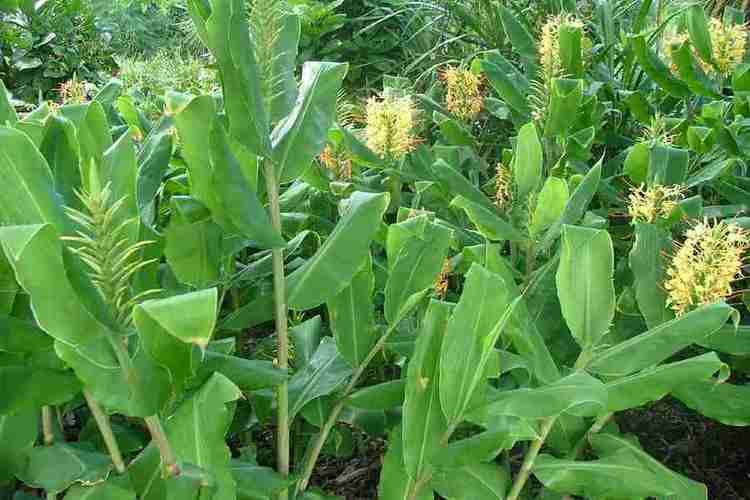 | ||
Similar Hedychium, Zingiberaceae, Hedychium coccineum, Hedychium flavescens, Hedychium coronarium | ||
Hedychium gardnerianum kahili ginger ginger lily hd 02
Hedychium gardnerianum (Kahili ginger, Kahila garland-lily, or ginger lily (Aust.)) is a plant native to the Himalayas in India, Nepal, and Bhutan. It grows to 8 ft (2.4 m) tall with long, bright green leaves clasping the tall stems. The very fragrant pale yellow and red flowers are held in dense spikes above the foliage. They appear towards the end of summer.
Contents
- Hedychium gardnerianum kahili ginger ginger lily hd 02
- Wild ginger the cancer of our native bush hedychium gardnerianum
- Cultivation
- Control as a weed
- Medicinal research
- References
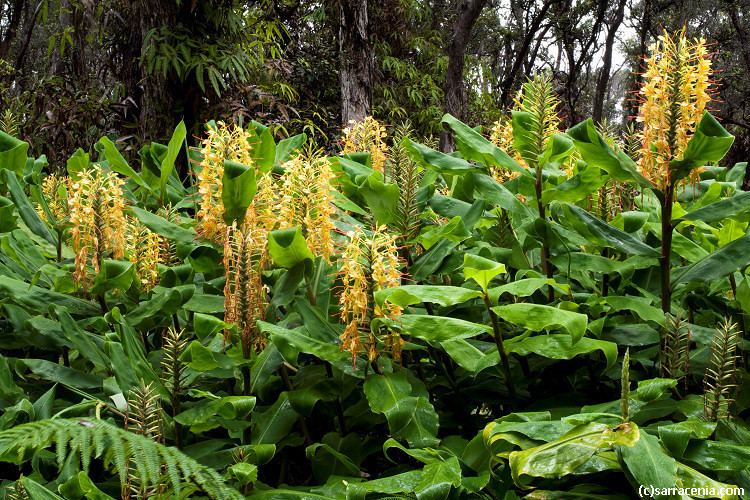
Wild ginger the cancer of our native bush hedychium gardnerianum
Cultivation
Hedychium gardnerianum is the most widely cultivated Hedychium species as an ornamental plant in gardens and parks. It prefers a warm tropical climate, although it can thrive in sub-tropical and temperate regions by tolerating light, infrequent frosts.
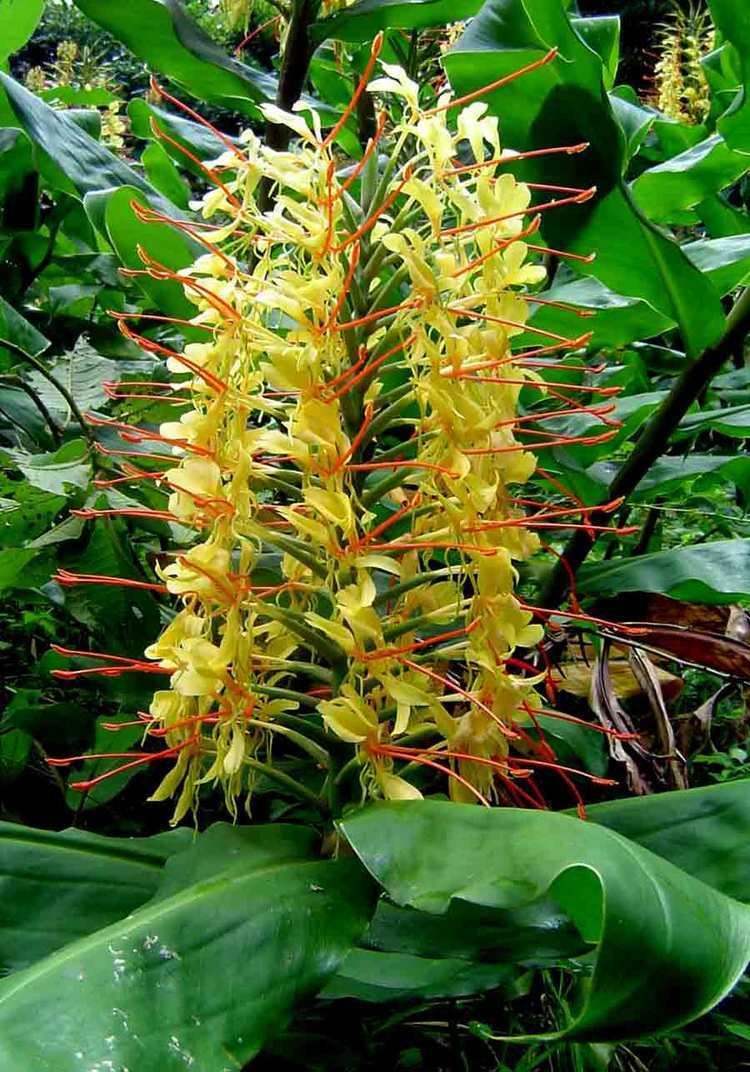
The plant is a serious invasive species in certain areas. It is known as 'wild kahili ginger' and is listed as a weed of concern on conservation land in New Zealand, Hawaii and the Azores.
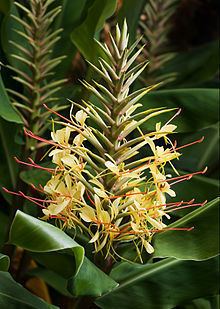
It has been recognized as one of "The World's 100 Worst Invasive Alien Species" by the IUCN Invasive Species Specialist Group (ISSG).
Control as a weed
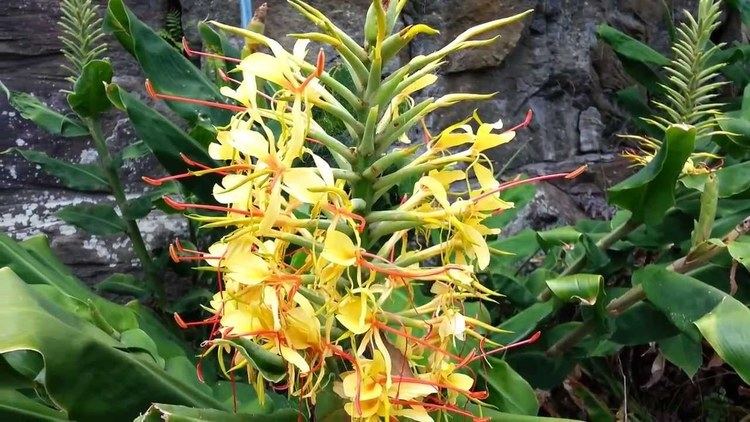
In areas where Hedychium gardnerianum is not of a concern, it may still require control depending on the environment, and its potential as an invasive species in the long term. The simplest way to reduce spread is monitoring. Removal of flower heads before they set seed, and monitoring spread of the rhizomes in these situations will enable Hedychium gardnerianum to be managed in cooler temperate climates such as in the United Kingdom.
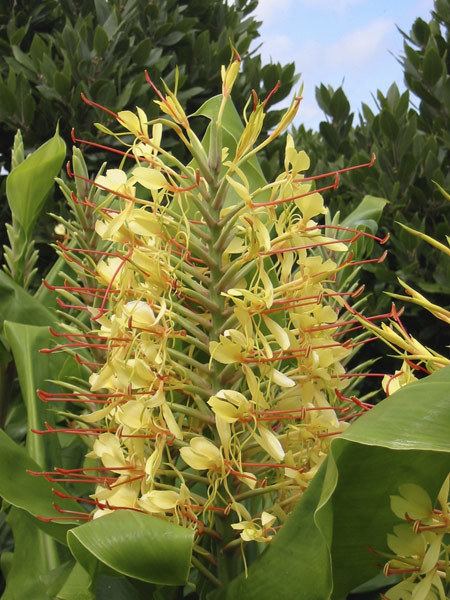
In tropical, or sub-tropical climates however, Hedychium gardnerianum can quickly colonise untended areas. Its sticky seeds are easily spread by birds and roaming mammals, while rhizomes crowd out native seedlings by forming dense mats. Without human intervention, it can colonise large areas quickly as each rhizome adds at least one segment per season depending on climatic and light conditions.
The methods mentioned above may give some control over any particular clump but will not resolve the problem. Each year, Hedychium gardnerianum's rhizomes increase the surface area of a particular area, whether the flowers are removed or not. Complete removal of the rhizomes or poisoning, (usually before flowers are matured), is the only certain way of controlling the plant if it is considered a weed When Hedychium gardnerianum is particularly virulent, annual follow up is required for some years to prevent re-infestation. Re-infestation may occur from spreading by neighbouring plants, or dormant seeds disturbed by the removal of the original tuber clump as seeds remain viable for 2–4 years. Lifted rhizomes should be removed from site as if left in contact with soil they will restore themselves.
Medicinal research
Medicinal research indicates that the plant compound, villosin, in Hedychium gardnerianum has potent cytotoxicity activity against human small cell lung cancer cells.
